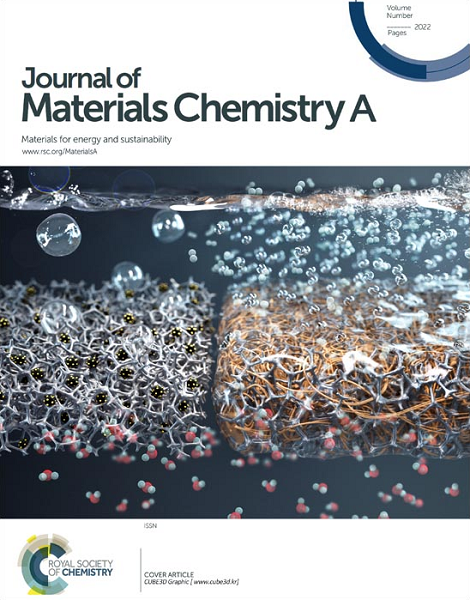Electrochemical Synthesis Wormcast-like Pd-based Polycrystalline High Entropy Aggregates for Methanol Water Co-electrocatalysis
IF 10.7
2区 材料科学
Q1 CHEMISTRY, PHYSICAL
引用次数: 0
Abstract
High entropy compound (HEC) nanostructures have attracted considerable attention for various electrocatalysis reactions due to their unique physicochemical features by the adjustable multi-elemental synergy. However, there is a lack of focus on grain boundary engineering in HEC nanomaterials for enhanced electrocatalysis. Herein, wormcast-like PdFeCoNiCu polycrystalline high-entropy nanomaterials (PdFeCoNiCu-pHENs) are synthesized by a facile two-stage potential electrodeposition method. The as-synthesized PdFeCoNiCu-pHENs wormcast-like porous nanostructure enriches grain boundary defects, which exhibit superior electroactivity toward both hydrogen evolution reaction (HER) and methanol oxidation reaction (MOR), as well as the excellent MOR-coupled hydrogen production in alkaline. Benefiting from the electron synergistic effect of multi-element and the full distribution of massive grain boundary defects in novel wormcast-like polycrystalline aggregation, PdFeCoNiCu-pHENs exhibited great MOR (the specific activity of 52.5 mA·cm−2) and HER (the overpotential of 38.4 mV versus RHE at 10 mA·cm−2) electroactivities and efficient MOR-assisted hydrogen generation (the required cell voltage of 1.11 V at 100 mA·cm−2) ability. This study offers a new strategy to develop advantageous high-entropy electrocatalysts for efficient energy-saving hydrogen production.用于甲醇-水共电催化的电化学合成蚯蚓状钯基多晶高熵聚集体
高熵化合物(HEC)纳米结构因其可调节的多元素协同作用而具有独特的物理化学特征,在各种电催化反应中备受关注。然而,目前还缺乏对 HEC 纳米材料晶界工程的关注,以增强其电催化性能。本文采用简便的两级电位电沉积法合成了虫洞状钯铁钴镍铜多晶高熵纳米材料(PdFeCoNiCu-pHENs)。合成的 PdFeCoNiCu-pHENs 虫洞状多孔纳米结构富含晶界缺陷,对氢进化反应(HER)和甲醇氧化反应(MOR)均表现出优异的电活性,并在碱性条件下具有优异的 MOR 耦合产氢性能。得益于多元素的电子协同效应和新型虫洞状多晶聚集体中大量晶界缺陷的充分分布,PdFeCoNiCu-pHENs 表现出了极高的 MOR(比活度为 52.5 mA-cm-2)和 HER(10 mA-cm-2 时相对于 RHE 的过电位为 38.4 mV)电活性以及高效的 MOR 辅助制氢能力(100 mA-cm-2 时所需电池电压为 1.11 V)。这项研究为开发高效节能制氢的优势高熵电催化剂提供了一种新策略。
本文章由计算机程序翻译,如有差异,请以英文原文为准。
求助全文
约1分钟内获得全文
求助全文
来源期刊

Journal of Materials Chemistry A
CHEMISTRY, PHYSICAL-ENERGY & FUELS
CiteScore
19.50
自引率
5.00%
发文量
1892
审稿时长
1.5 months
期刊介绍:
The Journal of Materials Chemistry A, B & C covers a wide range of high-quality studies in the field of materials chemistry, with each section focusing on specific applications of the materials studied. Journal of Materials Chemistry A emphasizes applications in energy and sustainability, including topics such as artificial photosynthesis, batteries, and fuel cells. Journal of Materials Chemistry B focuses on applications in biology and medicine, while Journal of Materials Chemistry C covers applications in optical, magnetic, and electronic devices. Example topic areas within the scope of Journal of Materials Chemistry A include catalysis, green/sustainable materials, sensors, and water treatment, among others.
 求助内容:
求助内容: 应助结果提醒方式:
应助结果提醒方式:


